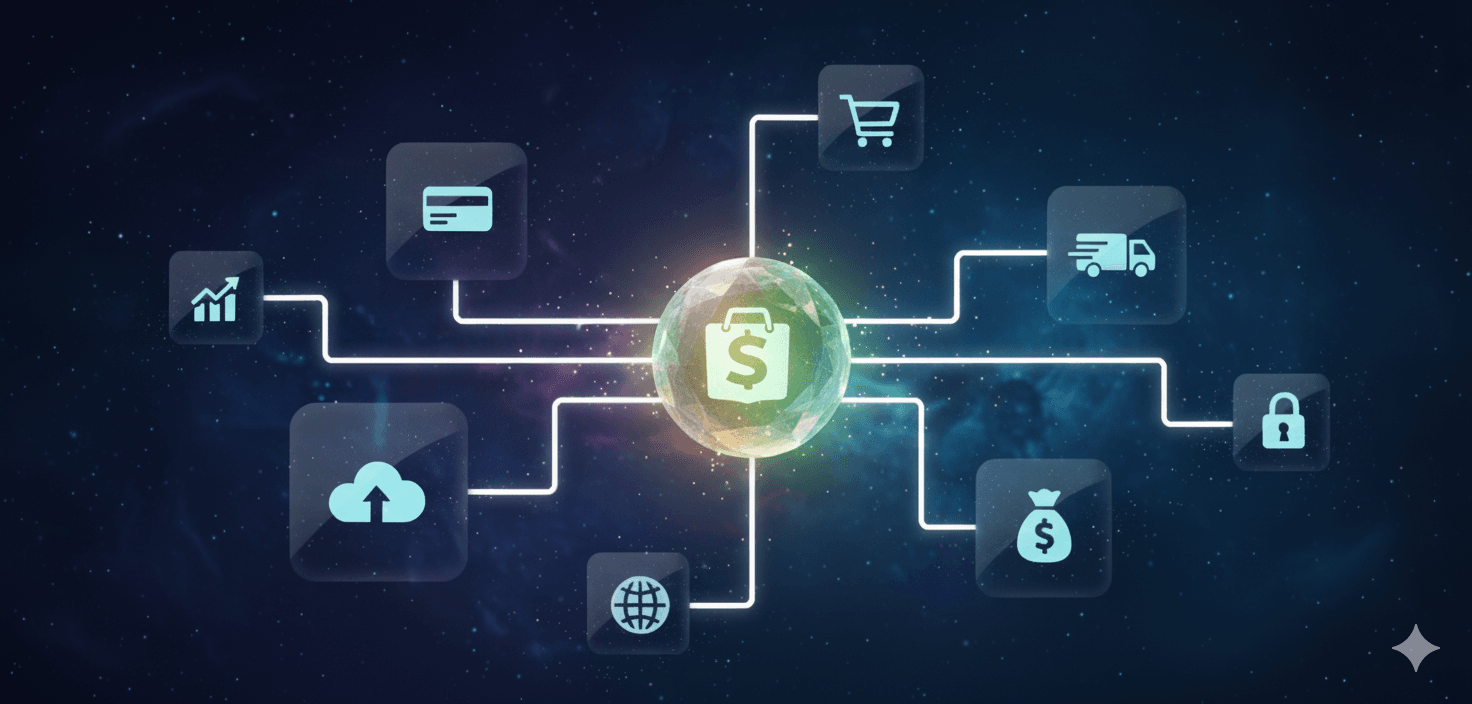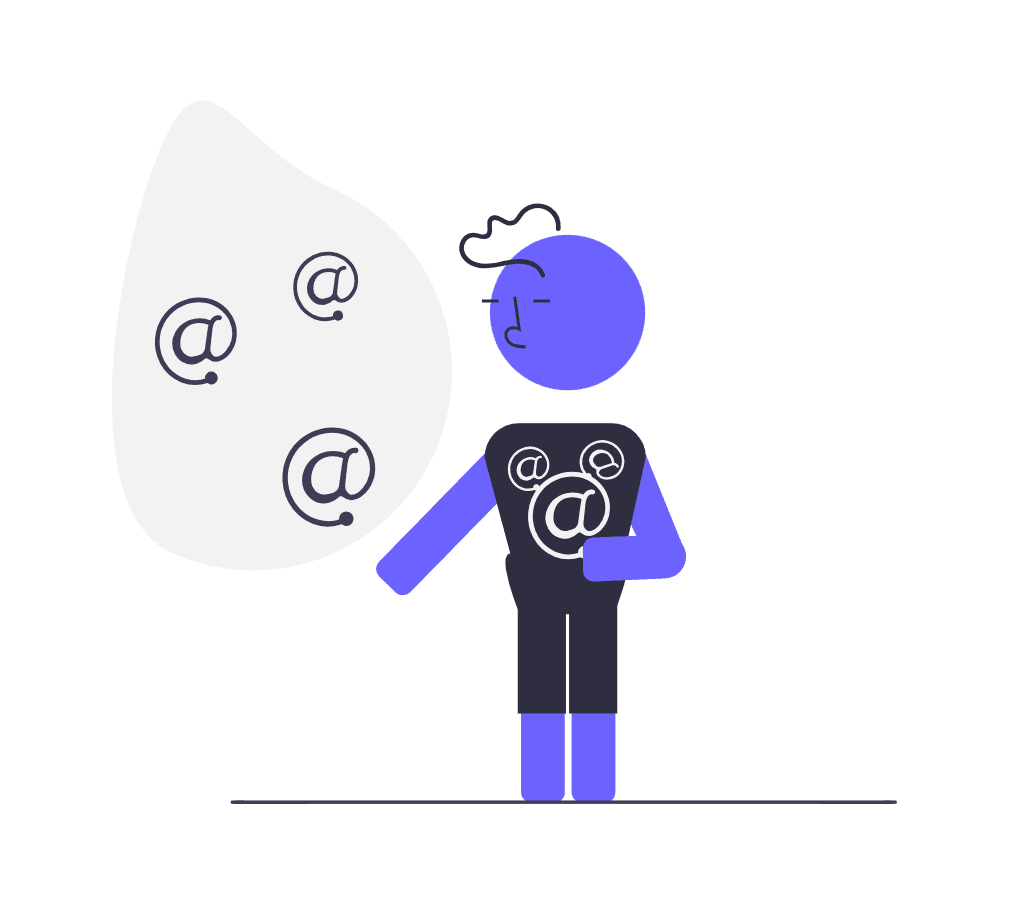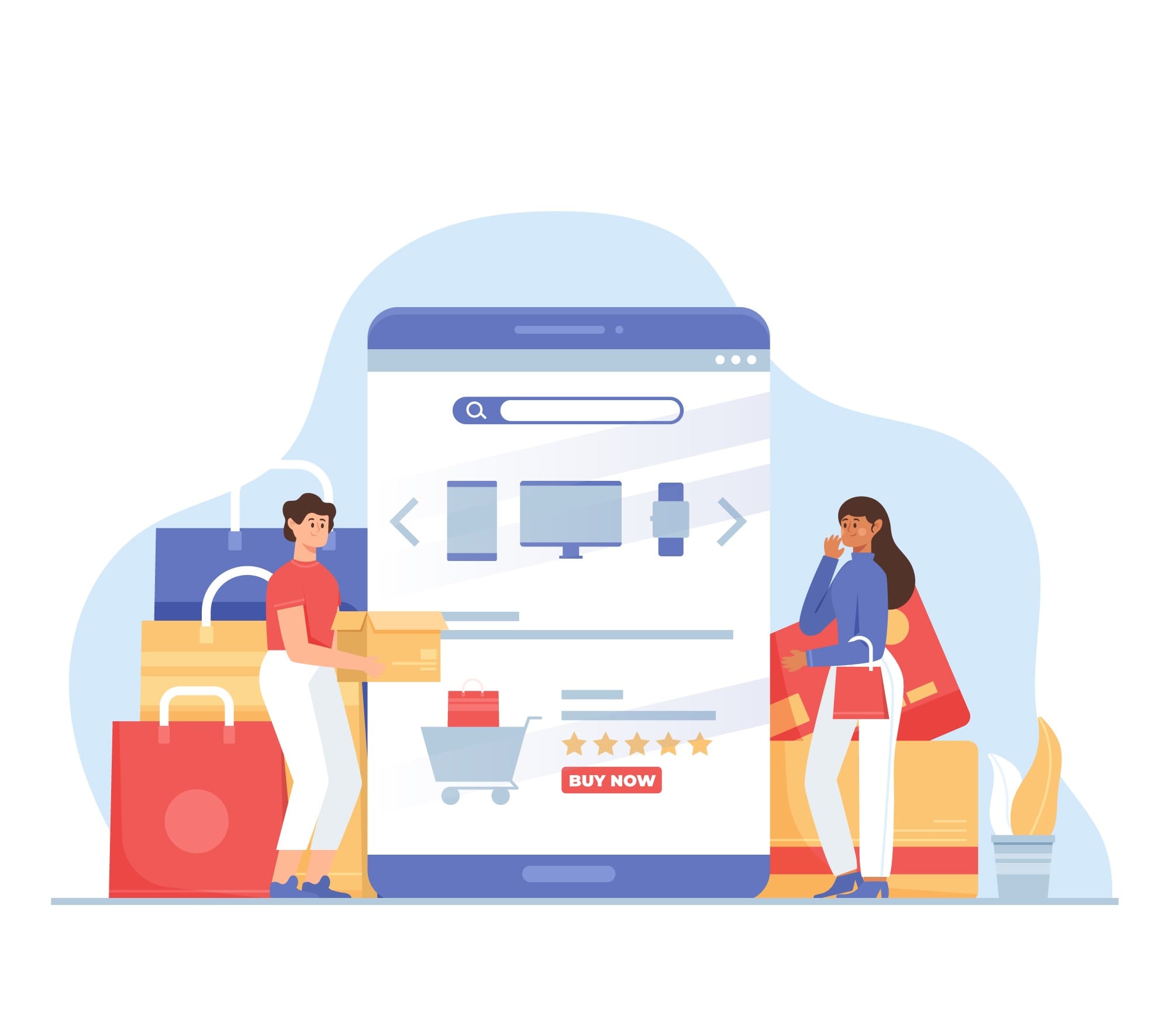According to Shopify’s own research, stores that leverage automation grow 30% faster and reduce manual workload by nearly 43% compared to those that don’t. In 2025, automation is a necessity. For modern Shopify merchants juggling multiple tasks (inventory management, customer communication, fulfillment, and reporting) automation apps act as silent team members, running the backend while you focus on scaling your brand.
From pre-purchase personalization to post-purchase engagement, Shopify automation apps help eCommerce brands operate smarter, not harder. This article breaks down 10 essential Shopify automation tools that enhance efficiency, protect profits, and create seamless customer experiences, plus practical tips on how to choose the right ones for your store.
Why Automation Matters for Shopify Merchants
As competition intensifies in eCommerce, merchants must optimize every part of the buyer journey. Automation reduces human error, shortens response time, and keeps the customer experience consistent. Whether you’re a D2C electronics brand, lifestyle retailer, or subscription business, automation helps:
Streamline operations: Free teams from repetitive manual tasks.
Improve accuracy: Minimize data entry errors and missed orders.
Boost revenue: Recover abandoned carts, prevent chargebacks, and upsell efficiently.
Enhance customer loyalty: Engage customers long after checkout through personalized post-purchase journeys.
What are the Top 10 Automation Apps for Shopify Merchants?
Below are the 10 most impactful Shopify automation tools (from core workflows to customer engagement and beyond).
Tool / App | Best For |
Shopify Flow | Building custom workflows to automate repetitive store operations without coding. |
Chargeflow | Automatically fighting chargebacks and recovering lost revenue using AI-powered evidence. |
WhatFlow | Automating WhatsApp messages for order updates, cart reminders, and real-time customer communication. |
SupaEasy | Creating custom Shopify Functions for discounts, payment rules, and checkout logic without developer help. |
Better Reports | Generating advanced sales, profit, and performance reports for data-driven decision making. |
Leap Auto Tags | Automating customer, order, and product tagging to improve segmentation and marketing workflows. |
Order Automator | Handling fulfillment, tagging, and fraud detection automatically for faster order processing. |
Uptime | Monitoring store uptime, checkout flow, and integrations to prevent downtime and performance issues. |
Otto | Scheduling theme, banner, and visual content updates for timely promotions and merchandising. |
Order Merger | Combining multiple orders from the same customer to reduce shipping costs and logistics workload. |
1. Shopify Flow – Build Custom Workflows Without Code
Shopify Flow is Shopify’s native automation hub that allows merchants to create workflows using triggers, conditions, and actions.
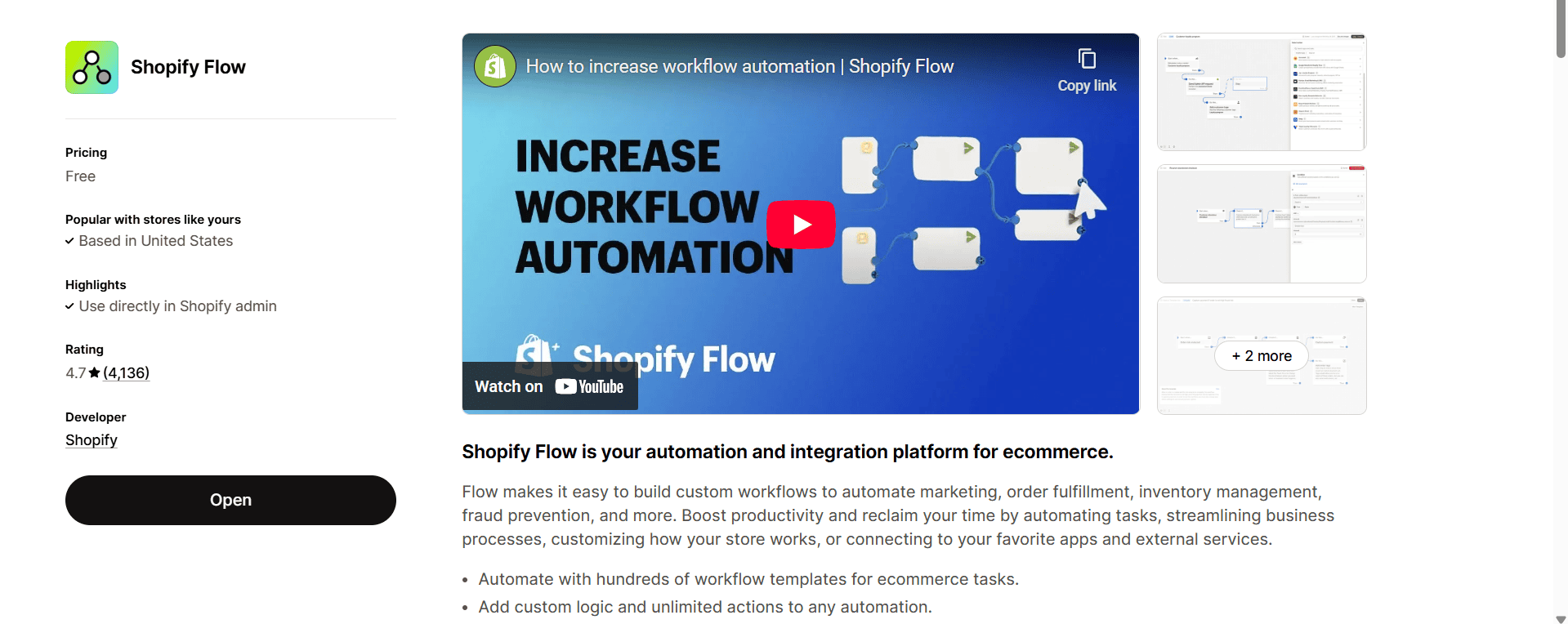
Key features:
Automates order tagging, inventory restocks, fraud checks, and loyalty workflows.
Integrates with hundreds of Shopify apps like Klaviyo, Gorgias, and Slack.
Offers prebuilt templates for quick setup.
Why it matters: It’s the foundation of Shopify automation which is ideal for merchants who want full control over repetitive processes without hiring developers. Start small (e.g., tagging repeat buyers) and expand to more complex workflows.
2. Chargeflow – Win Chargebacks Automatically
Chargeflow uses AI to manage chargebacks, gather evidence, and fight disputes on autopilot.
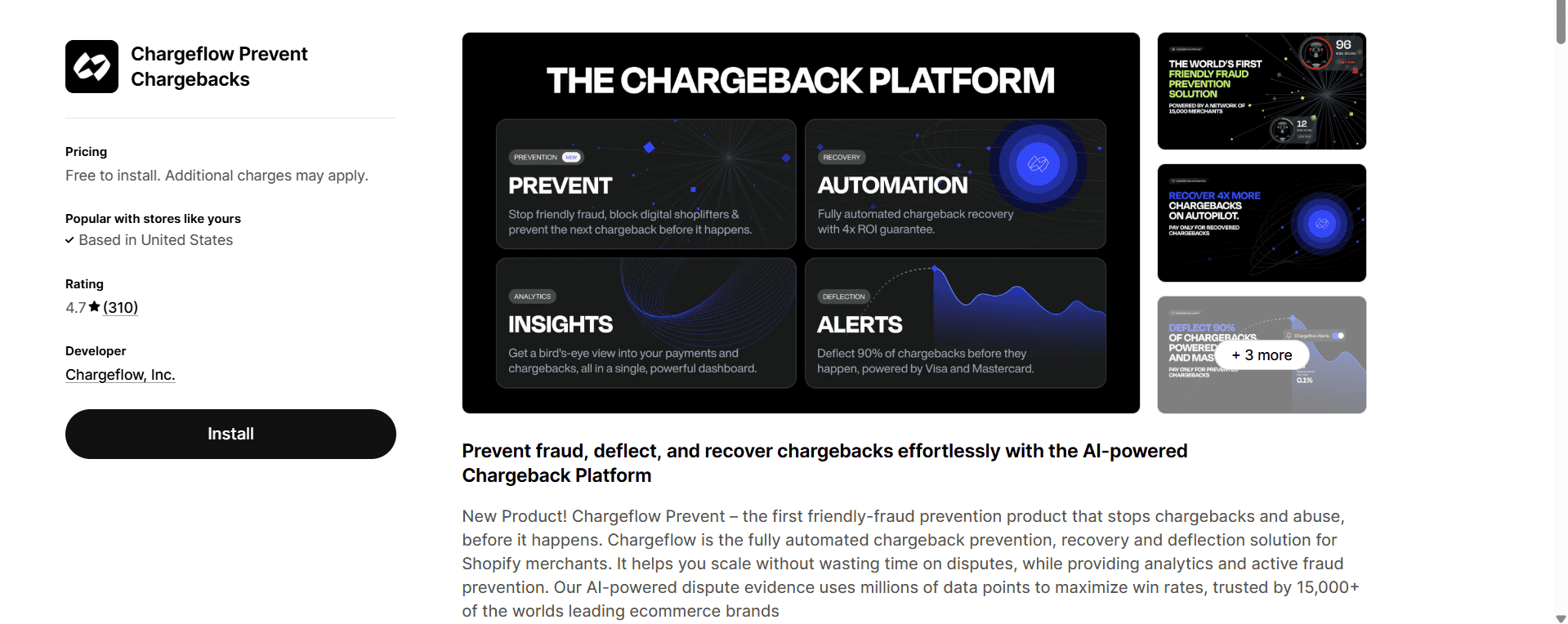
Key features:
Automatically compiles dispute evidence from Shopify data.
Prevents high-risk transactions before they occur.
Operates on a success-based pricing model (pay only if you win).
Why it matters: Chargebacks drain profits and credibility. With Chargeflow, Shopify merchants reclaim lost funds, reduce disputes, and maintain healthy payment processor standing.
3. WhatFlow – Automate WhatsApp Messaging
WhatFlow connects your Shopify store with WhatsApp Business, automating customer communication.
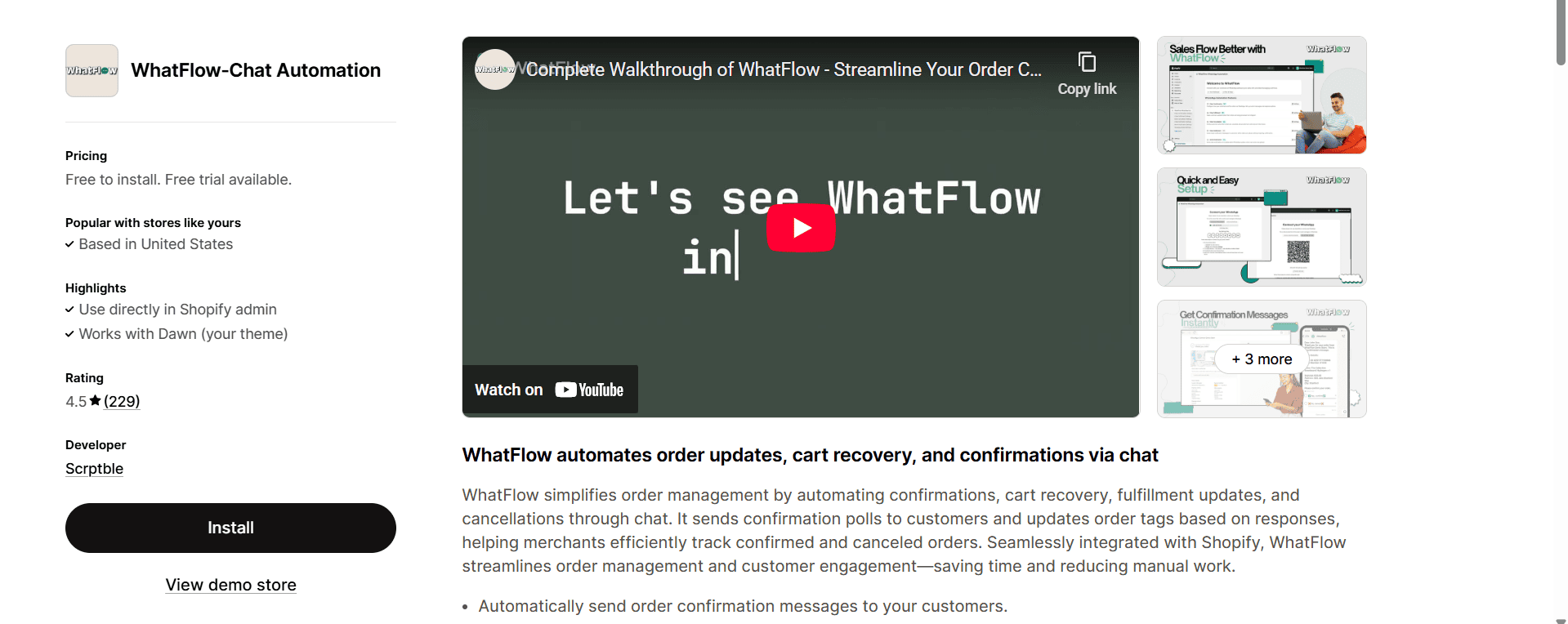
Key features:
Sends real-time order confirmations, abandoned cart reminders, and shipping updates.
Uses customizable WhatsApp templates for brand consistency.
Tracks replies and customer interactions.
Why it matters: With WhatsApp’s 98% open rate, this app ensures messages reach customers instantly, helping reduce cart abandonment and build stronger engagement.
4. SupaEasy – Create Shopify Functions Without Coding
SupaEasy lets merchants create custom Shopify Functions using AI, enabling flexible discount, payment, and shipping logic.
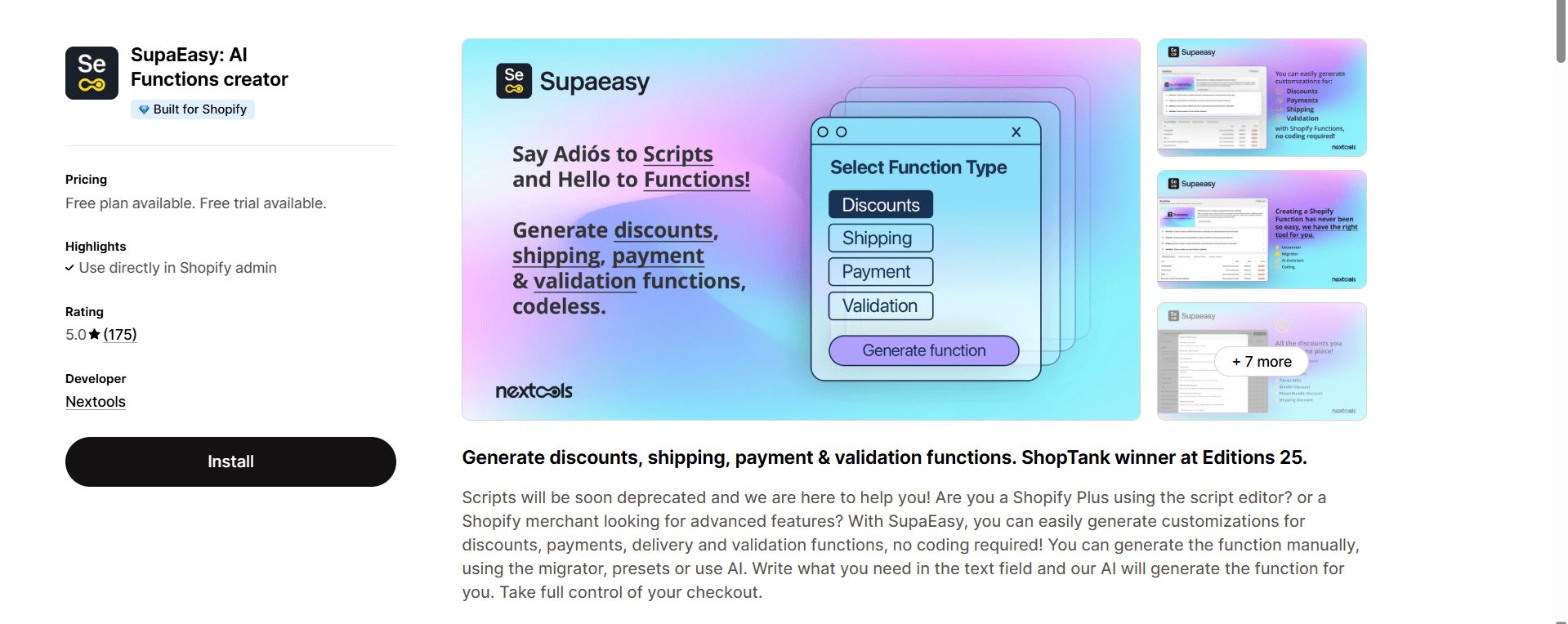
Key features:
Converts legacy Shopify Scripts to the new Functions framework.
Supports advanced use cases like “Buy X Get Y” or custom payment gateways.
No coding required—designed for non-developers.
Why it matters: It’s perfect for brands that want unique checkout experiences. SupaEasy bridges the gap between personalization and scalability, giving you advanced control over the buying process.
5. Better Reports – Data That Drives Decisions
Better Reports is a powerful analytics app that transforms raw Shopify data into actionable insights.
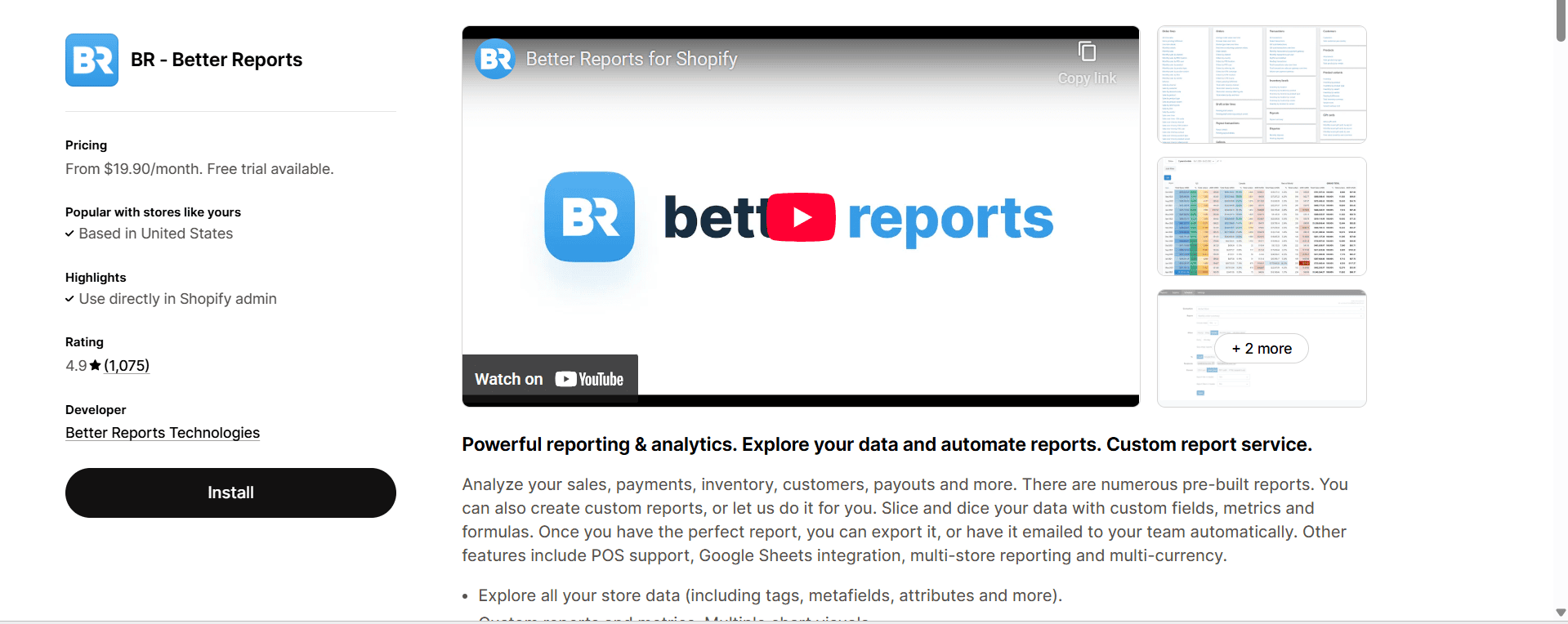
Key features:
Custom dashboards for sales, profit, and marketing performance.
Automated exports and scheduled email reports.
Integrates with POS, inventory, and marketing tools.
Why it matters: Merchants can identify top-selling products, monitor trends, and optimize budgets. Automated reporting replaces spreadsheets with real-time, data-driven decision-making.
6. Leap Auto Tags – Smart Tagging for Smarter Marketing
Leap Auto Tags automates tagging across customers, orders, and products to improve segmentation.
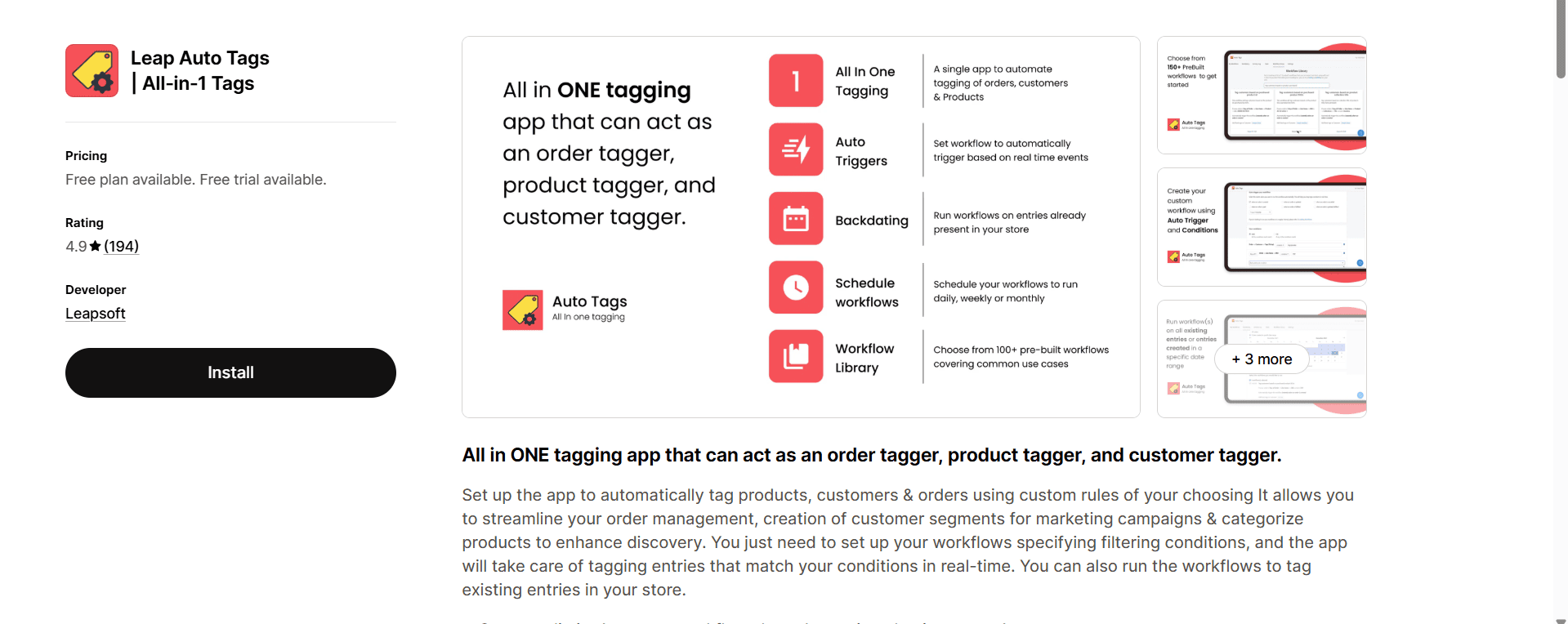
Key features:
Real-time and retroactive tagging based on custom conditions.
Works as a trigger for other apps like Klaviyo or Flow.
Centralized rule management and tagging history.
Why it matters: Tags are the backbone of automation. They power loyalty tiers, segmented campaigns, and fulfillment rules, keeping your data clean and marketing precise.
7. Order Automator – Fulfillment on Autopilot
Order Automator streamlines order processing by automating tasks between checkout and delivery.
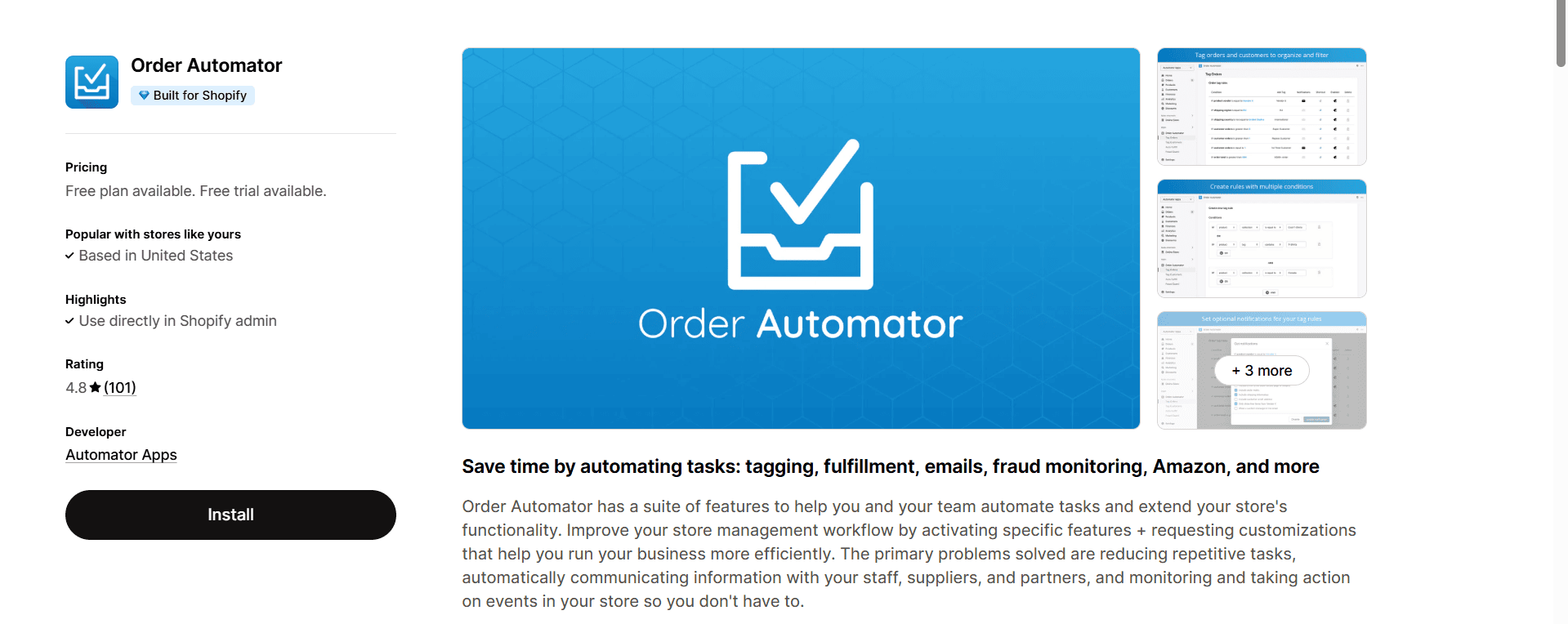
Key features:
Automatically fulfills, tags, or holds orders.
Cancels high-risk purchases detected by fraud filters.
Notifies staff or vendors instantly via Slack or email.
Why it matters: It’s a must-have for high-volume Shopify merchants. By automating order actions, it ensures consistent, efficient fulfillment without constant manual review.
8. Uptime – Automated Store Monitoring
Uptime monitors your store 24/7 to detect performance or connectivity issues.
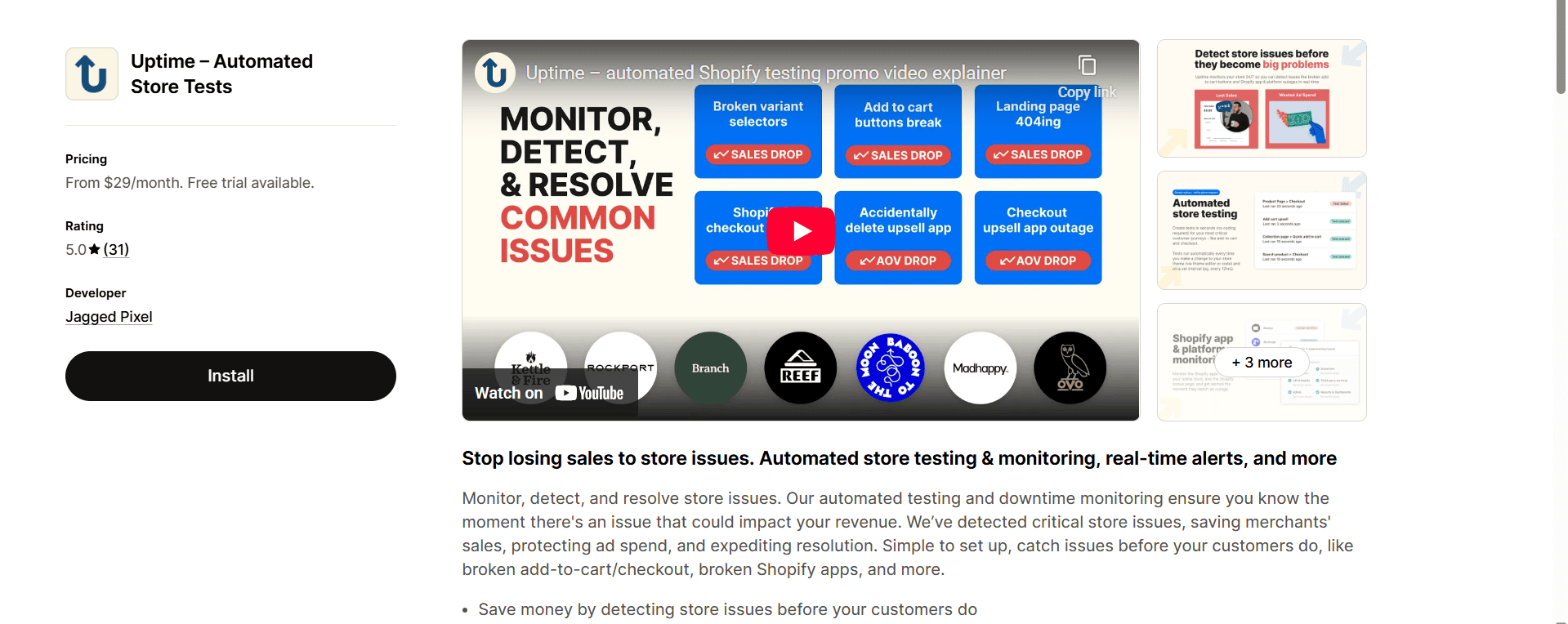
Key features:
Alerts via Slack, email, or SMS when your site is down.
Simulates user journeys (cart, checkout, payment) to catch hidden issues.
Provides performance analytics for optimization.
Why it matters: Every minute of downtime costs money and trust. Uptime ensures your Shopify store stays healthy and functional at all times.
9. Otto – Schedule Visual Store Updates
Otto is your visual automation assistant for merchandising.
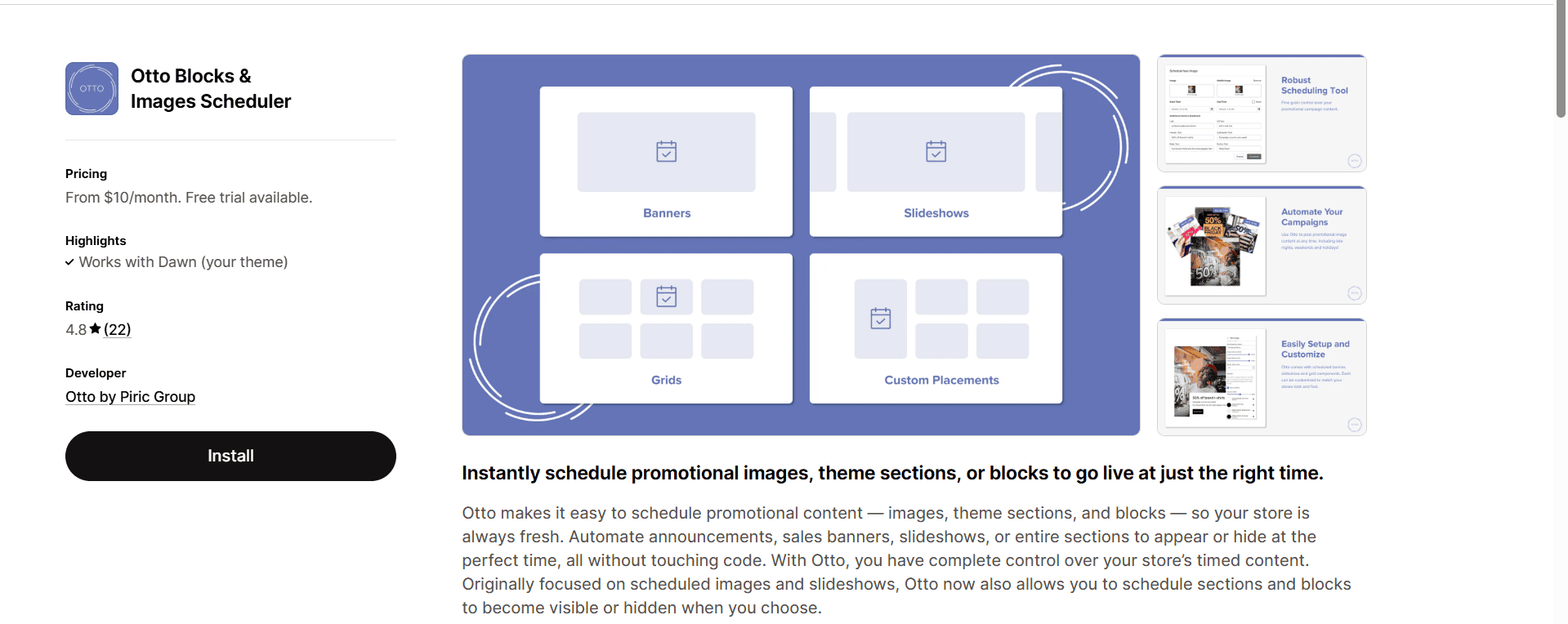
Key features:
Schedule homepage banners, pop-ups, and seasonal images.
Automatically revert to default layouts after campaigns.
Manage all visuals via a calendar dashboard.
Why it matters: Perfect for marketing teams that run multiple promotions. With Otto, no one needs to log in at midnight to switch banners (campaigns go live automatically).
10. Order Merger – Combine Orders for Cost Efficiency
Order Merger consolidates multiple customer orders into one shipment automatically.
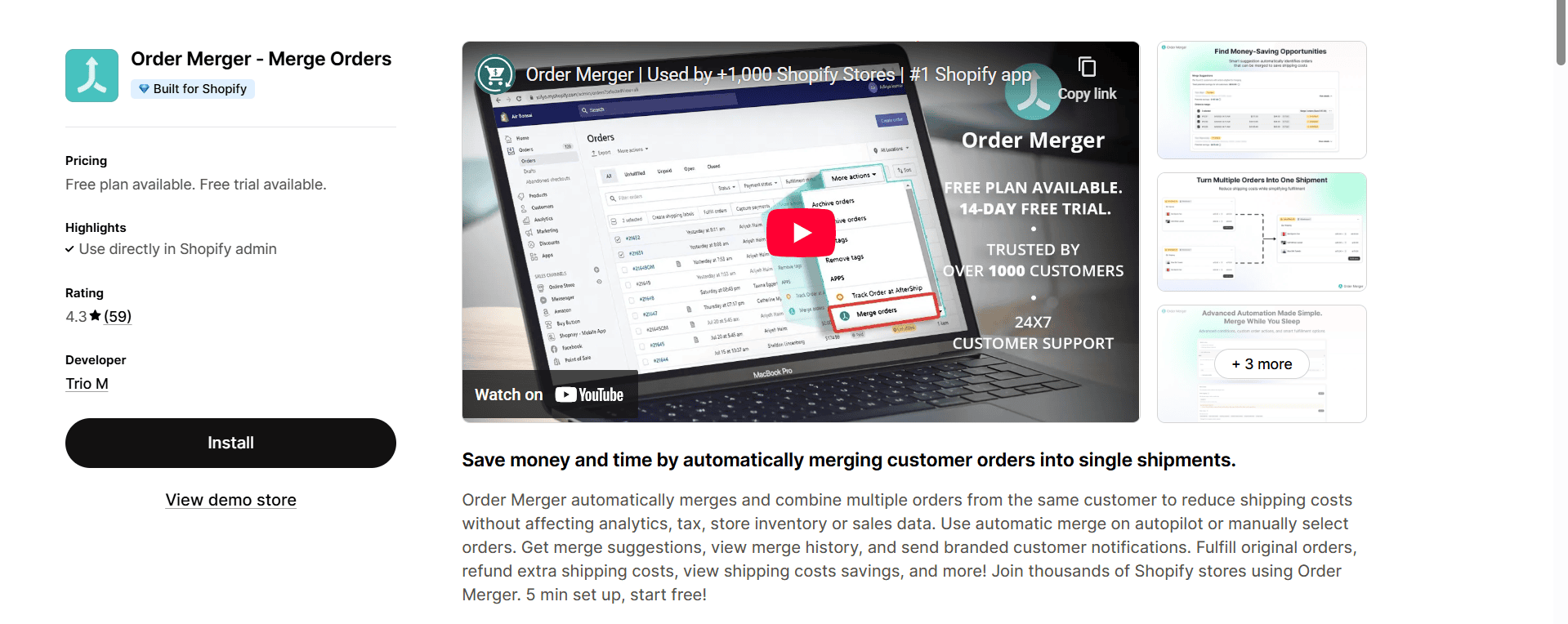
Key features:
Merge by customer name, address, or time frame.
Prevent conflicts using smart filters.
Tracks total cost savings from merged orders.
Why it matters: Especially useful for D2C and subscription businesses, this app reduces shipping costs and packaging waste, delivering a greener, cheaper, and faster customer experience.
Dyrect – Automate the Post-Purchase Experience
While most automation apps focus on pre-purchase and operations, Dyrect focuses on what comes after the ownership experience. Dyrect is a post-purchase engagement platform that automates product registration, warranty management, and ownership journeys.
The post-purchase phase is where long-term loyalty is built. Dyrect closes the automation loop, turning one-time buyers into lifelong customers.
How to Choose the Right Shopify Automation Apps
With hundreds of apps available, finding the right mix can be overwhelming. Here’s how to choose wisely:
Define your bottlenecks – Identify repetitive tasks or error-prone processes.
Prioritize ROI – Select apps that directly save time or recover lost revenue.
Check compatibility – Ensure apps integrate with Shopify Flow or your existing stack.
Test before scaling – Pilot automations on smaller segments first.
Think long-term – Choose tools that scale with your store and support future growth.
Pro Tip: Combine pre-purchase automation (like Flow, WhatFlow, or Leap Tags) with post-purchase tools like Dyrect for complete lifecycle coverage.
Smarter Automation Starts After the Sale
Automation is about working smarter and serving better. The right Shopify automation tools eliminate inefficiencies, reduce costs, and build a brand customers love. And while checkout automation saves hours, post-purchase automation builds loyalty. That’s where Dyrect stands out.
Dyrect helps modern brands automate product registration, warranty claims, and ownership journeys—unlocking the full potential of post-purchase engagement.
Explore Dyrect today and transform every customer into a lifelong advocate for your brand.
